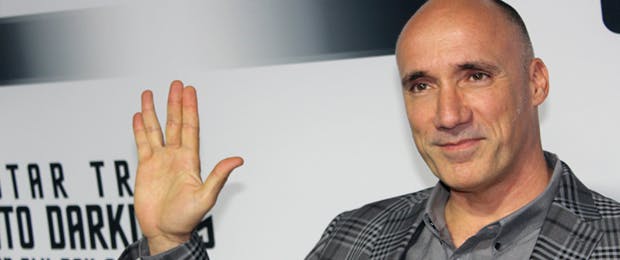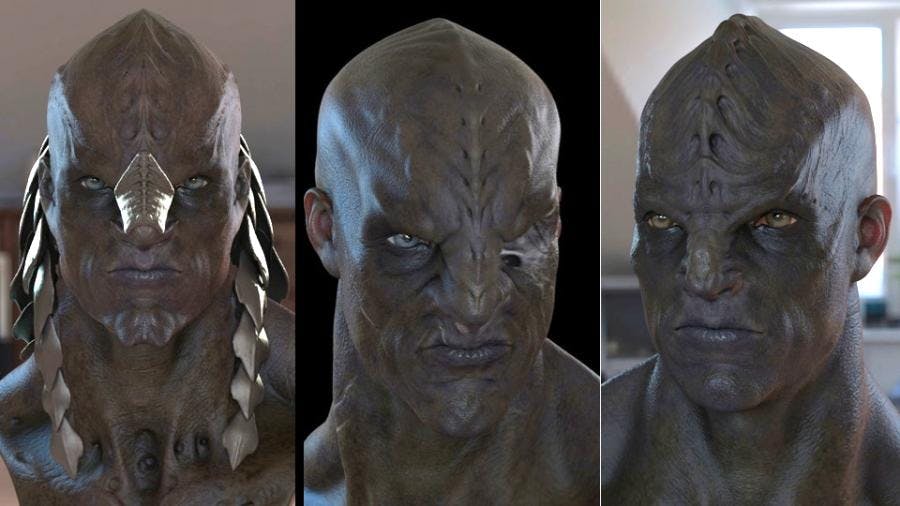Published Sep 16, 2013
EXCLUSIVE INTERVIEW: Star Trek Into Darkness Creature Designer Neville Page
EXCLUSIVE INTERVIEW: Star Trek Into Darkness Creature Designer Neville Page


How big a playground is Star Trek for you?
PAGE: It’s a tremendous playground. I don’t know if people know this, but I’ve also done costume design, a lot of makeup design, CG creature design. I haven’t done much set design. But J.J. welcomes me being a part of whatever he’s doing. He’ll just throw me a bone, throw me an idea. So, yeah, it’s a huge playground to work in.
How hard is it to top yourself each time, or can you not actually look at it that way?
PAGE: If I looked at it that way it would probably freak me out to the point of disabling me. But it is the job, really. It is the job for all of us. It’s the job for the writers to top themselves. It’s the job for J.J. to top himself. Sometimes it comes down to we have a little bit more time or we have a little bit more budget or what have a little bit more courage to try something new or different in this round. Having done the Klingons in the previous film, I wanted to push that.

You had a vision in your mind for them in the first film, but you never got to do it because the Klingons’ heads were covered with helmets…
PAGE: So, with this one, it was that perfect case of, “We have to top ourselves,” or at least take the helmets off. And, because of that, there were all sorts of opportunities to do in this film what I’d thought of for the first one. So I had a good three, three and a half years to let my ideas for the Klingons gestate. Then, when it came time to show J.J. my ideas, I had thought about it all so much that I was just ready to go on the Klingons.

Beyond the Klingons, what else are you proudest of that’s on screen in Star Trek Into Darkness?
PAGE: There are a bunch of background characters that you hardly ever see. J.J. has always been clear that his is not the alien movie, that it’s not about the aliens. I disagree (laughs). It should be. But there are a lot of background characters in Star Trek Into Darkness that David Leroy Anderson had done. One of them that I’m very proud of is the character – and he actually gets a lot of screen time – played by Joseph Gatt. I’m actually just very proud of Joe. We’ve known each other for a while and when the opportunity came up to have a unique-looking bridge member, I thought, “I know a unique guy.”
And that started with Abrams, right?
PAGE: J.J. had described an albino-looking, unique character on the bridge. He said, “I don’t know what exactly I’m describing here.” We got a bunch of casting images and I said, “Joe Gatt. We’ve got to get Joe Gatt in the mix.” When Joe came on board, when that worked out, I was just thrilled, and I’m thrilled with how he looks and what he does in the movie.
The Blu-ray is so crystal-clear. Images can be frozen and scrutinized. How much additional pressure does that put on your and your team?
PAGE: A lot. It really does up the stakes. It’s a bit of a game-changer, Blu-ray, because motion blur and grain are no longer the things that kind of save you. You could put creatures in the dark, backlight them, make them wet and just get those highlights, but for these types of films, it’s no longer the way we get to work. It’s out there and it’s in detail. If someone pauses it, it’s as if they’re looking at the actual sculpture that you’d done. So, every pore, every detail, every nuance counts now. In the same way, if you’re going to have your design turned into a toy, you also want to make sure that your design holds up as a tangible object that will be out on shelves at a store, because it’s a whole different game now, the way toys are made from your digital files. Everything counts.
StarTrek.com’s week of Star Trek Into Darkness Blu-ray coverage will continue tomorrow when we talk with composer Michael Giacchino.
